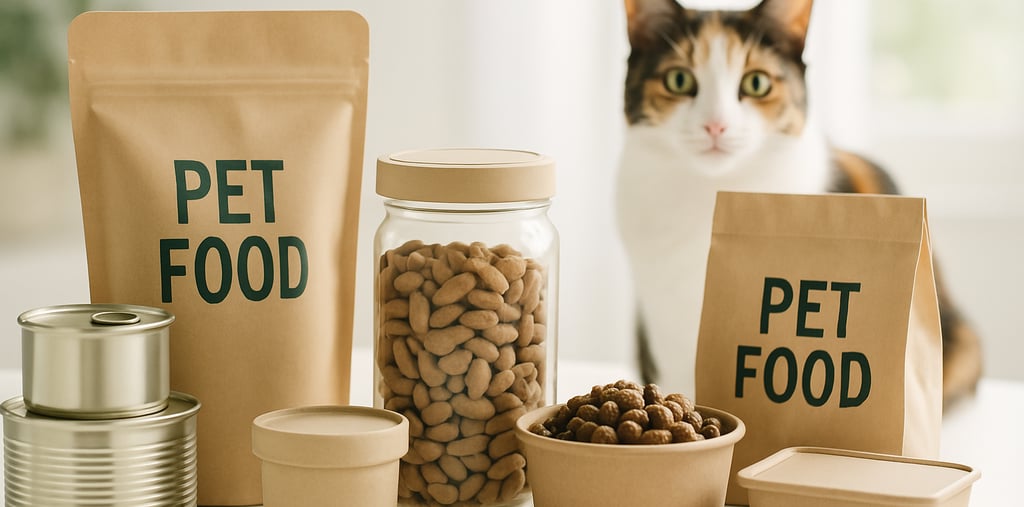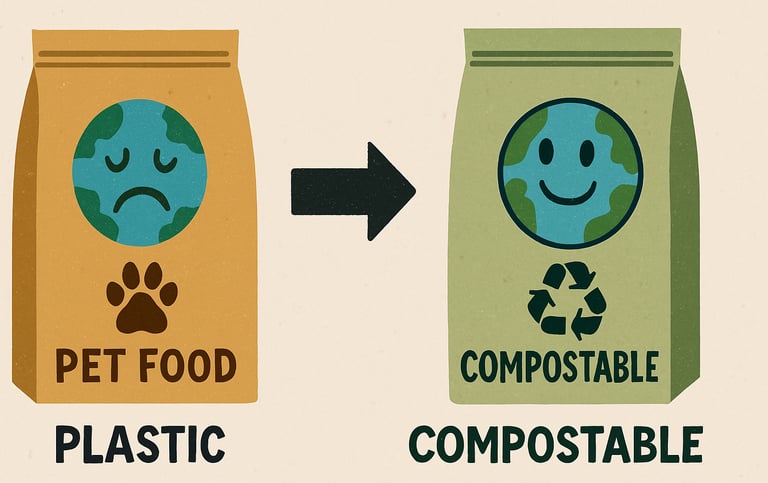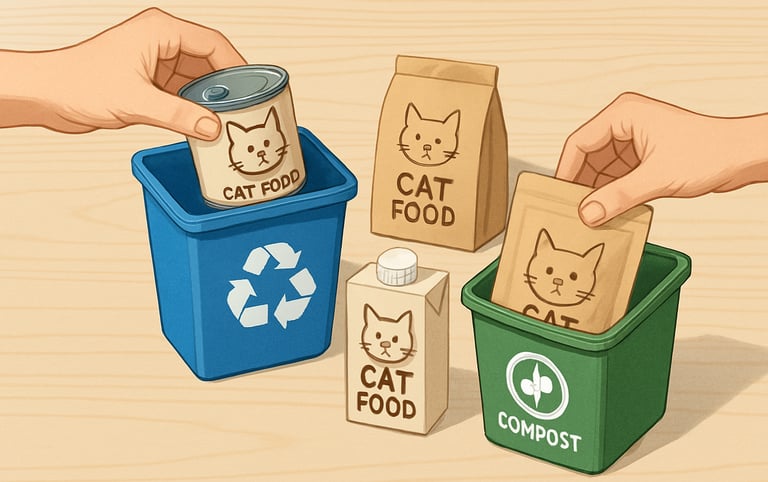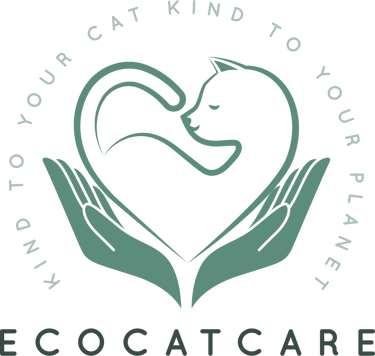Plastic-Free Pet Food: Is It Possible? Exploring Sustainable Packaging Options
NOURISHING YOUR CAT & THE PLANET


We're increasingly aware of the plastic problem plaguing our planet. From oceans to landfills, single-use plastics are a persistent environmental concern. As responsible pet owners striving for a sustainable lifestyle, the packaging of our cat's food often presents a dilemma. Rows of plastic pouches, multi-layer bags, and plastic-lined cans dominate pet store shelves. This raises the question: is plastic-free pet food truly possible? While achieving 100% plastic-free might be challenging for all products, significant strides are being made, and consumers have more sustainable packaging options than ever before.
The Challenge of Plastic in Pet Food Packaging
Plastic has become ubiquitous in pet food packaging for several reasons:
Barrier Properties: Plastic, especially multi-layer laminates, provides excellent protection against oxygen, moisture, and light, which helps maintain the freshness and nutritional integrity of pet food, extending its shelf life.
Durability and Convenience: Plastic packaging is lightweight, shatterproof, and can be easily molded into various shapes and sizes, including convenient resealable pouches.
Cost-Effectiveness: Plastic materials are often cheaper to produce and transport than alternatives like glass or metal for certain applications.
However, these conveniences come at an environmental cost. Many pet food plastics, particularly flexible pouches and multi-material bags, are difficult to recycle through standard municipal programs. They often end up in landfills, contributing to plastic pollution. Even recyclable plastics have limitations, as recycling processes themselves consume energy and resources, and not all plastic collected is actually recycled.
Exploring More Sustainable Packaging Options
The good news is that awareness is growing, and both consumers and pet food manufacturers are seeking greener alternatives. Here are some of the sustainable packaging options emerging in the pet food industry:
Metal Cans (Steel and Aluminum): Canned cat food has been a staple for decades. Steel and aluminum cans are highly recyclable and can be recycled multiple times without significant loss of quality. Look for cans that are easy to empty and clean to improve their recyclability. Some concerns remain about BPA linings in cans, though many brands are moving to BPA-free alternatives.
Paper-Based Packag
Paper Bags: Dry cat food is often sold in large paper bags. While many of these bags have a plastic lining to maintain freshness, some companies are exploring more sustainable liners or even unlined paper bags for certain product types where shelf-life requirements allow. Look for bags made from recycled paper or from sustainably managed forests (e.g., FSC certified).
Tetra Pak Cartons: Similar to juice or milk cartons, Tetra Pak and similar aseptic cartons are made primarily from paperboard, with thin layers of polyethylene and aluminum. These are recyclable in many areas, though availability of recycling facilities can vary. They offer good protection and are lightweight.
Glass Jars: While less common due to weight and breakability, some niche or gourmet pet food brands use glass jars. Glass is infinitely recyclable and inert, meaning it doesn't leach chemicals into the food. However, its heavier weight increases transportation emissions.
Compostable Packaging: This is an emerging area with significant potential. Compostable packaging is designed to break down into natural elements in a composting environment. However, it's crucial to distinguish between "biodegradable" and "compostable." True compostable packaging (certified to standards like ASTM D6400 or EN 13432) needs specific conditions found in industrial composting facilities, which aren't available everywhere. Home compostable options are also appearing but require careful management of home compost piles. Ensure you have access to appropriate composting facilities before relying on this option.
Mono-Material Plastics: Some companies are shifting from complex multi-layer plastics to simpler mono-material plastics (e.g., all polyethylene). These are easier to recycle if collection systems are in place for flexible plastics. Look for store drop-off programs like TerraCycle or those offered by some retailers if your curbside program doesn't accept them.
What Consumers Can Do
As consumers, our choices can drive change:
Choose Brands Wisely: Support companies actively working on sustainable packaging solutions. Look for transparency in their packaging choices and end-of-life considerations.
Buy in Bulk (Mindfully): Purchasing larger bags of dry food can reduce the overall packaging-to-product ratio. However, ensure you can store it properly and use it before it loses freshness to avoid food waste.
Recycle Properly: Understand your local recycling guidelines. Clean and empty containers as required. For hard-to-recycle items, explore specialized recycling programs like TerraCycle, which often partner with pet food brands.
Reduce Overall Consumption: While not directly packaging-related, avoiding overfeeding and reducing food waste means less food needs to be produced and packaged in the first place.
Advocate for Change: Let brands know that sustainable packaging is important to you. Consumer demand is a powerful motivator for industry innovation.
Achieving truly plastic-free pet food across the board is a complex challenge, but progress is being made. By understanding the available options, making informed choices, and advocating for better solutions, we can collectively reduce the plastic footprint of feeding our beloved cats. It’s about making incremental changes and supporting the shift towards a more circular economy for pet food packaging.
CTA Teaser: Our Eco-Conscious Cat Feeder guide delves deeper into minimizing waste associated with feeding your cat, from food choices to innovative packaging solutions and brands leading the way. Get your guide to make every mealtime a step towards a greener planet!




Sustainable Cat Care
At EcoCatCare, we provide resources that help cat parents discover how sustainable choices can create healthier, happier lives for their feline companions while contributing to a healthier planet.
EcoCatCare © 2025. All rights reserved
